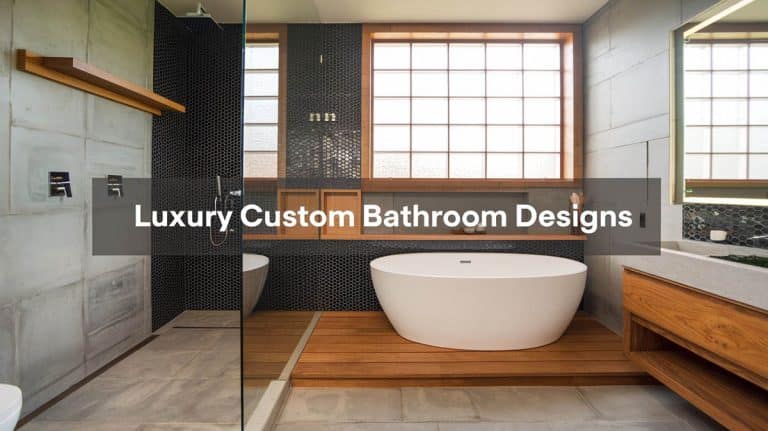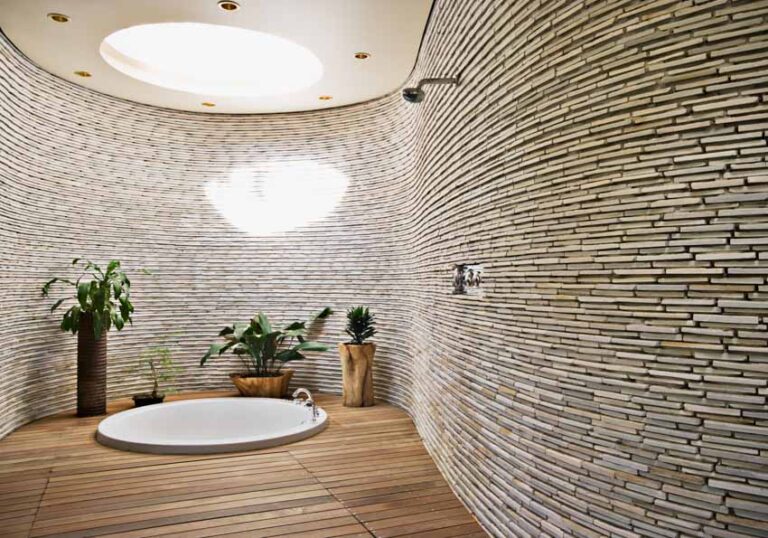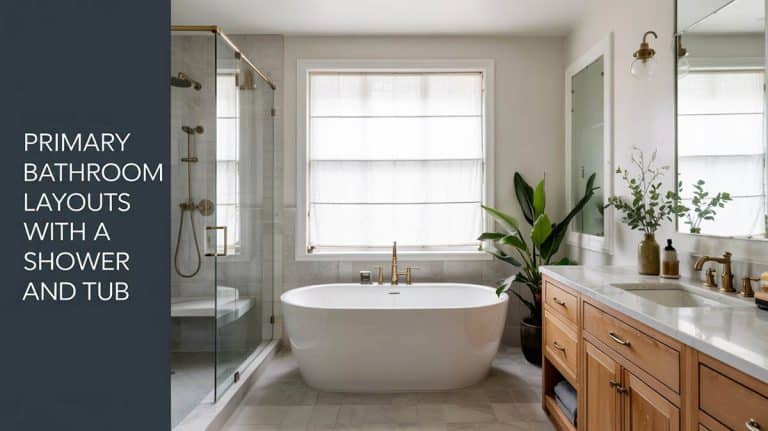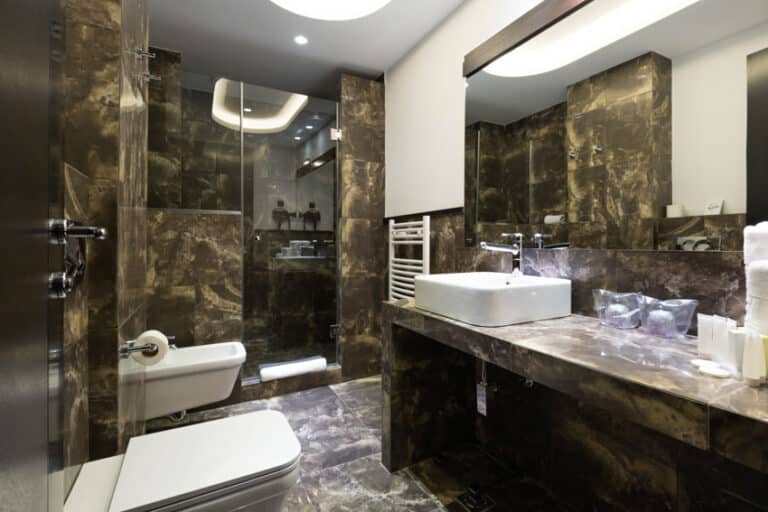Brick Shower Wall (10 Types & Exciting Bathroom Designs)
Find out what a brick shower wall is, including the different types that can be used in a bathroom, waterproofing tips, types, and components.
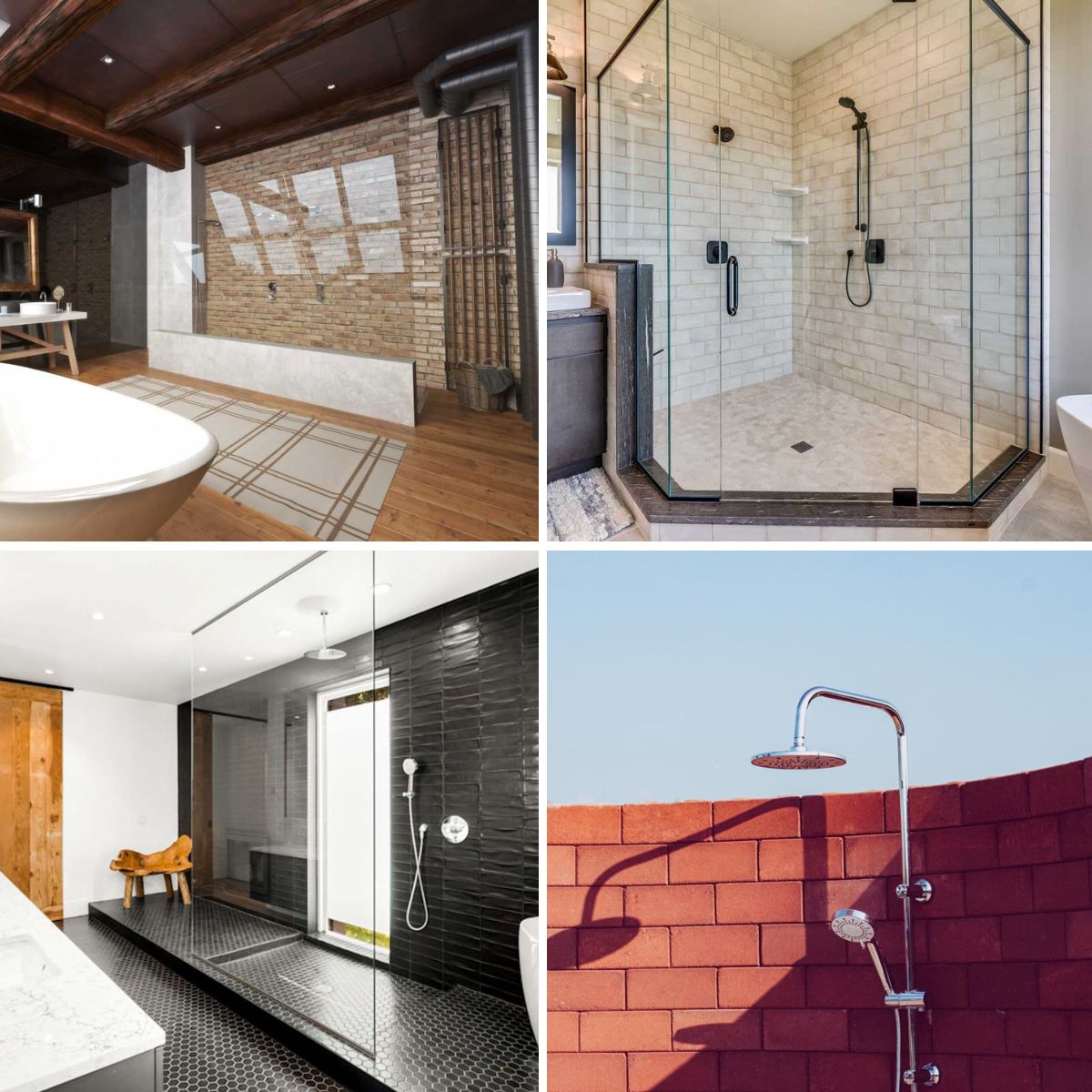
Bricks, the age-old building blocks of civilizations, continue enhancing indoor and outdoor environments. In bathrooms, brick shower walls juxtapose the old and new, organic and man-made, further elevating a well-planned interior.
Bricks for showers are a versatile feature. They complement even modern materials such as glass and metal, whether as an accent wall or a complete shower surround. While it contrasts well with engineered materials, brickwalls effortlessly blend well with traditional-styled bathrooms.
Types of Brick Used for Showers
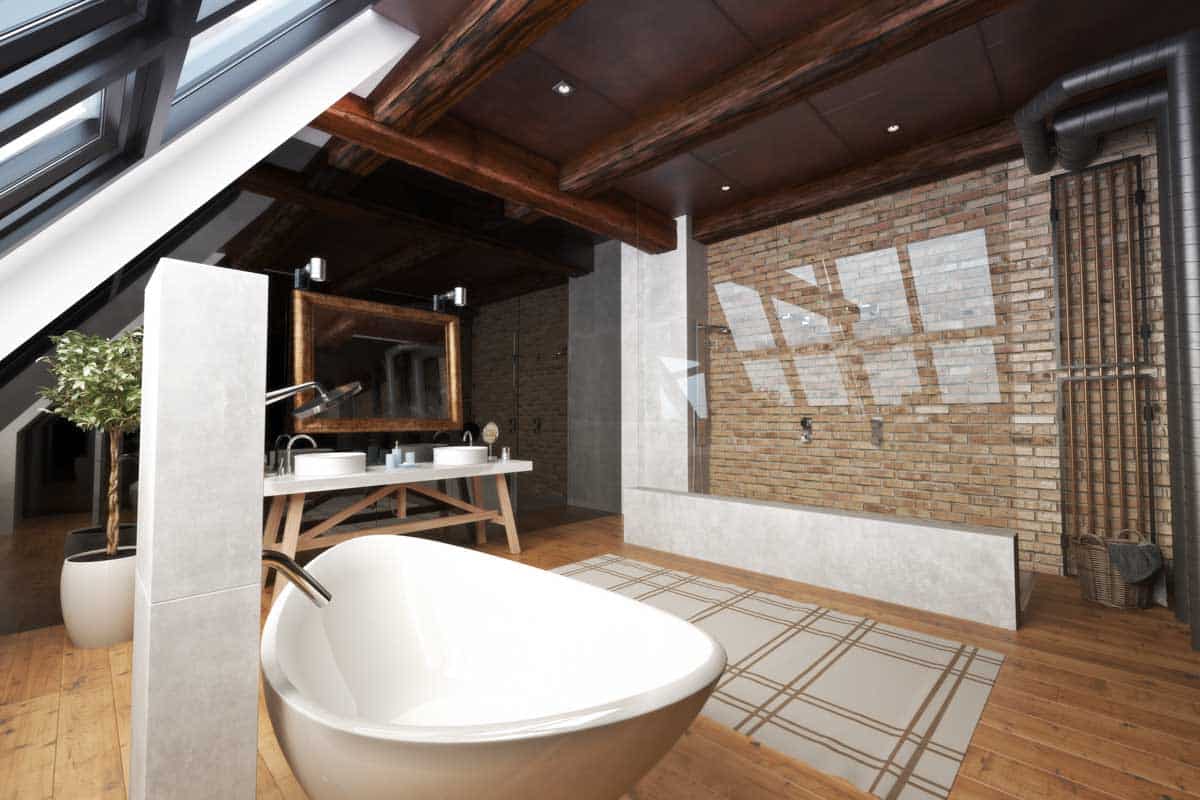
Solid Brick
A solid brick refers to any load-bearing kiln-dried, rectangularly-shaped building material with a typical modular size of 8″ x 3 5/8″ x 2 ¼” (LxWxH) in the U.S.
While the size of bricks in the U.K. is 215 mm x 102.5 mm x 65 mm (LxWxH), a metal rod is installed strategically along vertical or horizontal intervals to strengthen the modular bricks further.
The solid brick alternates short and long patterns with different numbers of wythes and courses. To differentiate whether you have a solid or a cavity wall, the end bricks or the short width are visible for a solid piece. At the same time, a cavity wall will have the entire bricks laid along the longer sides. Most older homes have solid bricks that are 4 inches to 6 inches thick.
Due to the main purpose of bricks, solid materials are recommended for ground-floor shower walls. However, if structural integrity allows, solid walls can be used and provide good insulation.
Unlike porcelain or ceramic tiles, the exposed brick does not have any protective layer that may allow water and other chemicals to seep through. It is advisable to provide a waterproofing system, such as applying a protective cream or sealant that can be sprayed or applied with a roller. There are colorless masonry sealants that retain a good amount of tactile surface of the surface layout.
If you prefer not to use a waterproofing sealant to maintain the color and texture quality, another option is to install a glass panel a few inches away from the wall. This prevents water from the shower area from reaching the exposed materials.
Tempered glass or fiberglass shower glass is preferred in shower areas as they are durable and easy to clean. Choose frameless glass to fully showcase a wall of exposed bricks.
Brick Wall Panel
The brick wall panel is the perfect option when you want a shower wall that doesn’t need a major renovation. These patterned panels are typically called faux bricks, an imitation of the real thing that comes in sheets with different patterns. Traditional patterns such as herringbone, stack bond, Flemish, and English bond are available in various colors and textures.
The faux panels simulate the look and texture of authentic solid materials but with a thinner width. The lighter material also allows you to have the look with any type of wall substrate, as these wall panels are lightweight.
This means you’ve got a safe and easy-to-install material. There’s a wide range of sizes of wall panels. Depending on the manufacturer, it can be as small as 20 inches x 40 inches or as large as a plywood size of 4 feet x 8 feet.
Also termed as veneer brick wall panels, many types are made with different materials. The most common are the following:
P.U. Foam Brick Panels
The Polyurethane Brick Panels or P.U. are generally 75% lighter than real brick and can be used in both interior and exterior shower enclosures. They are excellent soundproof materials and are easy to install. There are peel-and-stick P.U. panels, meaning grout and mortar are unnecessary. Find quality P.U. foam panels that are waterproof.
The High-density polyurethane panel is a variation of P.U. panels that are more resistant to impact due to its durability and density, which makes them great for exterior applications.
Medium-density fiberboard (MDF) is an engineered composite wood product that is nonstructural and somewhat similar to particleboard. MDF is one of the most rapidly growing composite board products to enter the market in recent years. – Handbook of Green Building Design and Construction, Sam Kubba
MDF Brick-look Panels
Medium Density Fiber or MDF brick panels are composed of wood fibers and bonded with resins. The mixture is molded to create a simulated appearance of stacked bricks. Due to its composition, it is recommended that MDF panels be properly sealed when used in a shower wall so they are lower maintenance and easier to keep clean.
PVC Brick-look Panels
PVC, or polyvinyl chloride, is a popular material that is widely used in many construction components such as certain roof types, piping, and flooring. The main reason for this extensive use is its ability to withstand temperature changes and pressure better than other plastic materials. Above 140 degrees Fahrenheit or 60 degrees Celsius, though PVC can deform.
Ceramic and Porcelain Tile Panels. Manufactured to replicate the look of real brick patterns, ceramic and porcelain tile panels offer the benefits of the typical ceramic and porcelain tile.
Thinner than bricks, these tile panels are lighter and easier to install as a shower surround. However, the wider dimensions require careful handling, especially for ceramic tiles.
Brick Mold Panels
For a DIY project, brick panel molds are available, and the most common are concrete molds and resin panel molds. Concrete molds are usually made from PVC that mimics the texture and pattern of bricks.
Wet concrete is poured into these molds, and when it hardens, they are removed to reveal the pattern. Resin panel molds are also available, where a mixture of polymers and resins is poured into the mold. The mold panels are practical for stylish accent wall designs.
Brick Tile
If you love the look of brick but require particular features of tile, pattern tile can be the perfect design solution for your shower wall. Patronizing brick tiles can lessen unused or salvaged bricks from landfills since manufacturers use shaved materials to create appealing thin slices. The salvaged bricks can also be ground and molded into tiles.
A version of brick tile called “slip tiles” are wire-cut reclaimed bricks that yield the same typical dimensions with the usual tile thickness of 20mm.
These tiles are perfect for a shower wall when finishing an existing bathroom since it doesn’t take up much of the square footage. This also means it can be installed on higher floors without adding dead load.
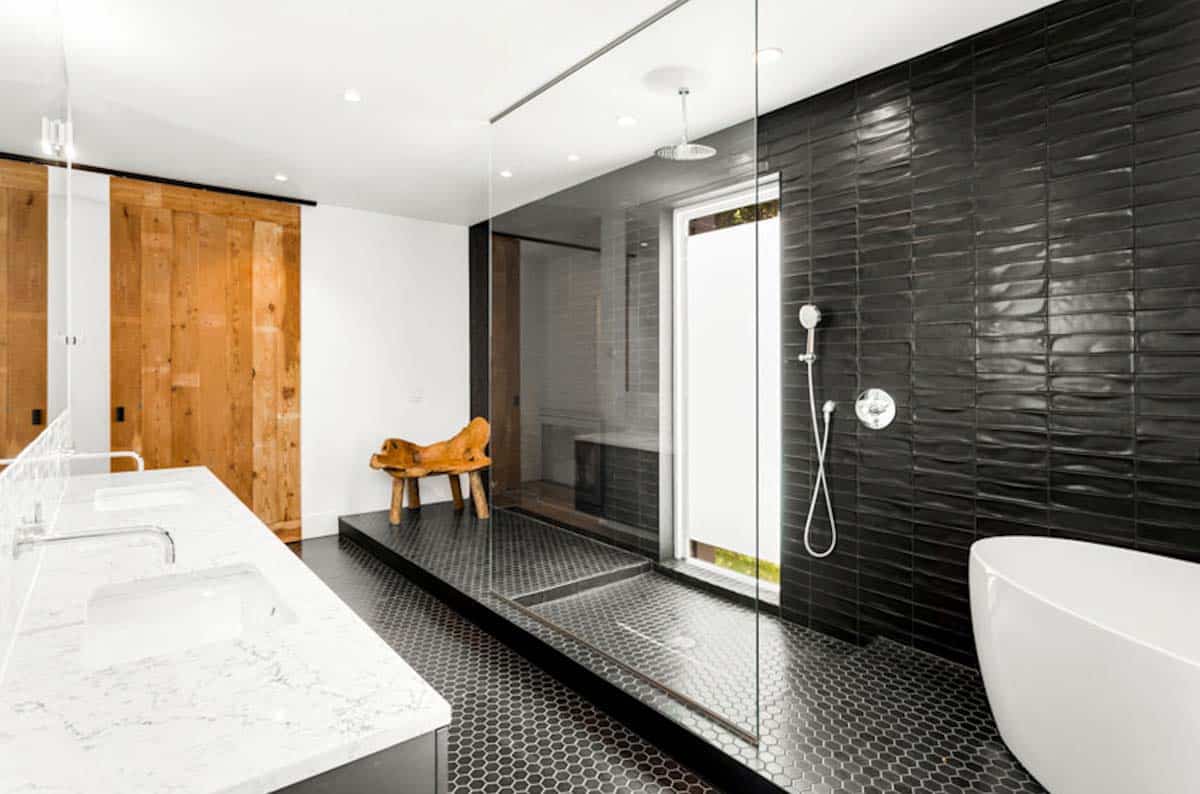
Ceramic Brick
A ceramic brick is made to mimic the natural look of traditional bricks with a different composition. While traditional materials are made with kiln-dried process and clay, ceramic bricks are manufactured in a controlled environment and are composed of refined clay and other minerals.
Ceramic, like other tiles, are thinner than traditional bricks, making them easier to install on a shower wall. Ceramic tiles can be installed on an existing shower wall or a new construction. Since ceramic tiles are manufactured, color and texture can be customized; as such, these ceramic styles are usually called “veneer bricks.”
Porcelain Brick
A subtype of ceramic tiles in general, porcelain bricks also simulate the look of traditional walls with a wider selection of shades and textures. What sets it apart from the typical ceramic is porcelain brick’s durability.
Porcelain is very durable due to the material’s high firing temperature during manufacturing. The typical temperature used exceeds 1200 degrees Celsius or 2,192 degrees Fahrenheit.
This makes porcelain denser and heavier, thus more resistant to cracking and water seepage as the pores of porcelain are tighter. The virtually impervious surface makes the porcelain surfaces a perfect waterproof wall finish for shower areas. Porcelain is also the recommended choice for those with steam showers or wet rooms with high exposure to moisture.
Glass Brick
Also termed glass blocks, glass bricks are square or rectangular-shaped components with a typical thickness of 3 inches or 75 mm and 4 inches or 100mm. While the 4-inch-thick glass tiles are generally used as a shower surround since it has the same thickness as the usual wall partition, there are 6-inch or 150 mm glass tiles as well.
Glass bricks have developed a wide range of design options since its commercial success in the ’80s. Today, you’ll find opaque, translucent, frosted, and patterned designs also available in varying colors. The colorless glass styles remain a preferred architectural feature, especially in shower walls, since they allow light to pass through while keeping the aesthetic clean and simple.
The glass bricks or blocks are effective in providing privacy while allowing natural light to pass through. The thickness of the blocks also acts as a sound barrier.
Waterproofing Brick Wall in Shower
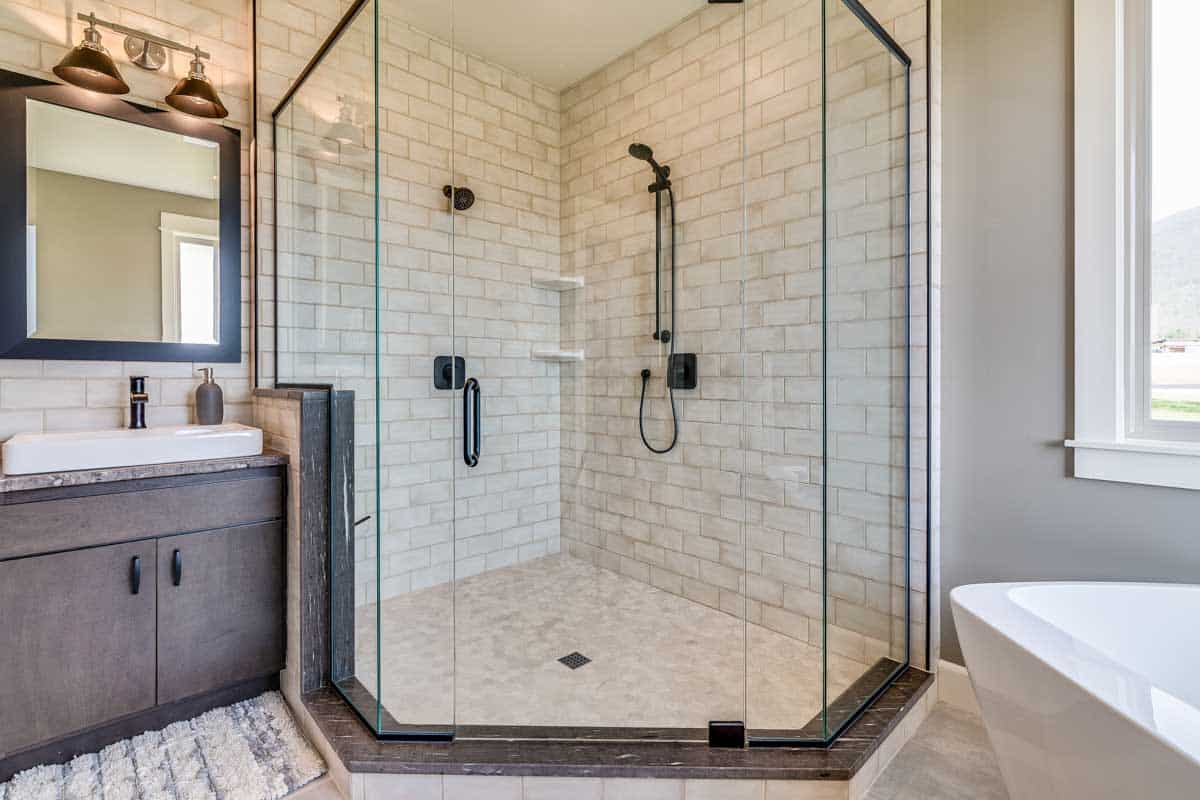
Both traditional and modern bricks have clay, and these organic materials can be affected by environmental factors and affect structural integrity. Water is a major factor in the deterioration of a shower masontrywall, and taking steps to waterproof the brick installation is the best way to prevent common problems with thesewalls.
According to the EPA, the recommended humidity in a bathroom is between 30% and 50%, which means that bathroom walls, especially the shower walls, are exposed to a high percentage of water.
Moisture problems in showers can cause:
• Efflorescence
• Crumbling and Spalling
• Mildew and Mold Growth
• Discoloration
Best Brick Waterproofing Types and Components
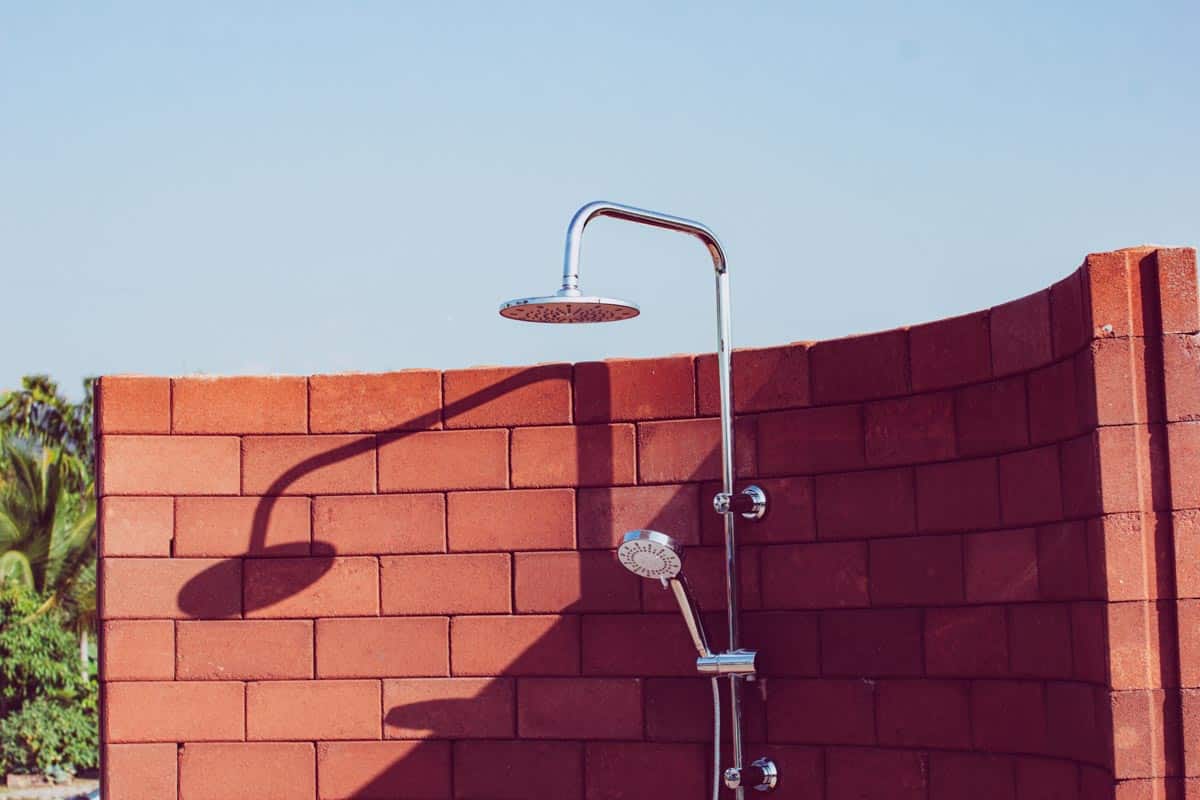
It is important to note that there are differences between impregnated and penetrating sealers. Impregnating sealers are typically interchanged with penetrating sealants, as the term implies the treatment seeps through the brick to fill the pores.
While film-forming sealants or plainly a “sealant” form an added layer on the shower wall. There are a few sealing products that cater to both features of filling in the pores and creating a top barrier.
1. Waterproofing Membranes: A waterproof membrane is typically installed on a shower wall substrate before the bricks are installed. So, in the event that water seeps through the bricks, the substrate is protected, preventing further damage.
They usually come in sheets and are self-adhesive. Polyurethane-based waterproofing membranes are recommended for wet areas such as the bathroom. Most manufacturers provide a line of waterproofing membrane products with each recommended application.
2. Film-Forming Sealants: Film-forming sealants create a protective layer on the surface. These sealants may slightly alter the brick’s appearance but provide enhanced protection. Look for sealants with the following components:
• Acrylic: In masonry application, acrylic sealers can last from 1 to 4 years. Acrylic sealers can work well in bathrooms, especially on masonry surfaces such as brick walls that are not frequently exposed to standing water.
A clear protective film is formed that enhances the appearance of the masonry while providing some resistance to water, stains, and mildew. Like most sealants, they come in a variety of finishes such as matt, semi-gloss or glossy.
• Polyurethane: Considered the most popular sealant for bricks in both bathroom flooring and wall applications, polyurethane sealants provide a strong protective layer and excellent durability. Generally, polyurethane creates a glossy sheen when applied.
3. Elastomeric Sealers: Elastomeric sealers are commonly used on exterior walls and brick floor water protection, which are suitable for masonry surfaces that experience movement due to temperature changes or settling. They can bridge small cracks and provide a waterproof barrier. This makes it a perfect sealant for repairing old brick installations in a bathroom.
4. Penetrating Sealants: When you’re looking for a sealant that won’t affect the texture quality of your shower wall, the penetrating sealant is a great option. Instead of settling on the surface of the wall, penetrating sealants seep through the pores.
This effectively seals off holes and crevices where water or moisture is possible to seep through. When looking for penetrating sealants, look for these components:
• Silane: The silane-based sealants are known for their good penetration into brick pores. The solvent can be applied using a roller, paintbrush, or a low-pressure spray. Aside from its waterproof capabilities, silane-based penetrating sealant prevents soluble salts and freeze or thaw damage.
Due to its excellent features, silane-based sealant products are also used in exterior applications such as masonry bridges and marine structures.
• Siloxane: A component often combined with silane, siloxane-based sealants can last from 5 to 10 years before reapplication. The brick shower wall sealant is able to create a hydrophobic barrier that prevents water from coming through the material. At the same time, it repels water and is breathable, allowing water vapor to escape.
Features to Look for in a Brick Sealant:
• Prevents Common Damages Caused by Water
• Allows Trapped Water Vapor to be Released
• Mold and Mildew Resistance
• Does not Yellow or Deteriorate from U.V. Rays
• Ease of Application protection.
• Compatible with the type of substrate and surface material.
• Does not release harmful fumes.
• Less Time Interval in Reapplication
Before applying waterproofing, thoroughly clean the shower wall surface of oils, debris, or any type of dirt. A properly cleaned surface will open up the bricks’ pores. Thus, the sealant formula can penetrate through the pores.
This also allows any trapped water to vaporize and dry out, guaranteeing a moisture-free wall installation. There are also color-enhancing sealants for brick walls that improve the natural color and design.
did we cover all the questions you have about using these materials for a bathroom remodel? Share your experience, tips, or thoughts regarding wall tiles that look like bricks below. See more related content in our article about granite shower walls on this page.

